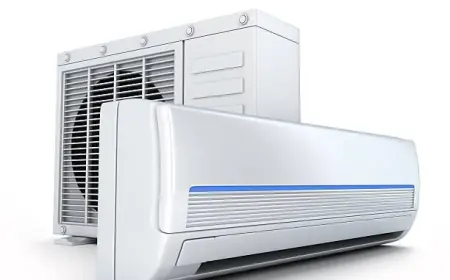The Versatility of Sheet Metal Fabrication: A Comprehensive Guide
Sheet Metal Fabrication

Sheet metallic fabrication is a cornerstone of modern production and production. It is a versatile system that transforms flat sheets of metal into diverse shapes and systems for industries starting from automobile to aerospace. The utility of sheet metal fabrication is going past just developing merchandise; it affects the performance, durability, and layout of countless structures and structures.
What is Sheet Metal Fabrication?
Sheet metallic fabrication refers to the method of turning flat sheets of steel, commonly made from materials like steel, aluminum, brass, copper, or titanium, into custom shapes and systems. This way involves reducing, bending, forming, and assembling to produce components that meet unique specifications.
Fabrication techniques might also range from conventional guide techniques to particularly sophisticated, pc-managed procedures that ensure precision and efficiency.
The Processes Involved in Sheet Metal Fabrication

Sheet metallic fabrication encompasses several steps, every tailor-made to acquire the desired end result:
1. Cutting
Cutting involves dividing the sheet steel into smaller portions. This step is achieved using numerous strategies, inclusive of:
Shearing: A mechanical manner to make immediately cuts.
Laser Cutting: A specific approach the usage of lasers to create complex designs.
Plasma Cutting: Suitable for thicker sheets, using plasma to cut via metallic.
Water Jet Cutting: A bloodless slicing method using excessive-pressure water combined with abrasives for clean edges.
2. Bending
Once the metal is cut to the required size, it's miles bent into form the usage of system like press brakes. This stage is critical for developing additives with curved or angular designs.
3. Forming
Forming involves reshaping the steel without doing away with material. Processes include:
Stamping: Imprinting designs at the sheet metallic.
Rolling: Shaping the steel into cylindrical or conical forms.
Deep Drawing: Pulling the steel into a die to form deeper shapes.
4. Welding and Assembly
Welding is essential to enroll in portions of metallic together, making sure structural integrity. The assembled parts might also then go through similarly completing to decorate durability and appearance.
5. Finishing
Finishing complements the aesthetics and capability of fabricated components. Techniques encompass portray, powder coating, anodizing, and sprucing, which offer corrosion resistance and visual enchantment.
Applications of Sheet Metal Fabrication

The adaptability of sheet metallic makes it imperative in a big range of industries:
1. Automotive Industry
Sheet metal is drastically used to fabricate car our bodies, chassis, and additives. Its lightweight and sturdy nature make it best for improving gas performance at the same time as keeping safety.
2. Aerospace Sector
In the aerospace industry, precision and electricity are paramount. Sheet metallic fabrication produces elements like fuselage panels, wing systems, and engine components, ensuring performance underneath extreme conditions.
3. Construction and Architecture
From roofing substances and ductwork to decorative elements and structural reinforcements, sheet steel is a staple in creation. It gives electricity, flexibility, and resistance to environmental factors.
4. Electronics and Appliances
The compact and problematic designs of modern-day electronics and home equipment frequently require sheet steel components for enclosures, brackets, and internal components.
5. Energy Sector
In renewable strength, sheet metallic is critical for creating wind turbine elements, solar panel frames, and power garage structures.
Advantages of Sheet Metal Fabrication
1. Durability
Fabricated sheet metal components are constructed to resist wear and tear, making them perfect for programs that demand longevity.
2. Cost-Effectiveness
Advancements in fabrication technology have reduced material waste and exertions prices, making it a finances-pleasant option for lots industries.
3. Customization
Sheet metallic fabrication gives unprecedented flexibility. Whether it’s a completely unique architectural design or a custom device part, the method adapts to unique needs.
4. Lightweight Solutions
While strong, sheet steel may be fabricated to be lightweight, that is essential in industries like aerospace and automobile.
5. Environmental Sustainability
Many metals utilized in sheet fabrication are recyclable, aligning with the developing demand for eco-friendly manufacturing practices.
Emerging Trends in Sheet Metal Fabrication
The enterprise continues to adapt, integrating new technology and approaches to fulfill current challenges:
1. Automation and Robotics
Automated systems and robotic palms are revolutionizing fabrication tactics, making sure precision, speed, and decreased human blunders.
2. Smart Manufacturing
The integration of the Internet of Things (IoT) in fabrication centers permits for actual-time tracking and facts-pushed choice-making, improving efficiency.
3. Advanced Materials
Innovations in material science are introducing excessive-power, lightweight alloys that increase the possibilities of sheet metallic fabrication.
4. Additive Manufacturing Integration
Combining conventional fabrication with 3D printing technology is starting new avenues for generating complicated and hybrid designs.
5. Green Manufacturing
There is a growing focus on sustainability, with manufacturers adopting power-green practices and using recycled substances.
How to Choose a Sheet Metal Fabrication Provider
Selecting the right fabrication associate is essential for ensuring the best and capability of your challenge. Here are some factors to remember:
1. Experience and Expertise
Look for a company with a tested song file and expertise in handling your particular venture necessities.
2. Technology and Equipment
Ensure the facility uses latest device to assure precision and performance.
3. Customization Capabilities
The provider have to offer flexible answers tailor-made on your precise needs.
4. Quality Assurance
Check if the organization adheres to enterprise requirements and gives first-class assurance protocols.
5. Customer Support
Reliable verbal exchange and put up-venture guide are important for a smooth experience.
The Future of Sheet Metal Fabrication
As era advances, the capacity of sheet steel fabrication grows exponentially. Innovations like synthetic intelligence, machine gaining knowledge of, and new materials promise to redefine what’s feasible, using development throughout industries.
The ongoing demand for lightweight, durable, and sustainable answers ensures that sheet metallic fabrication will continue to be a cornerstone of modern-day manufacturing.
Conclusion
Sheet metal contractors fabrication is a dynamic subject that has fashioned industries global. Its versatility, sturdiness, and value-effectiveness make it an integral a part of cutting-edge production and layout. Whether you’re looking to build the following skyscraper, expand modern-day electronics, or create modern automotive answers, sheet steel fabrication affords the muse for fulfillment.
As advancements in era and substances keep to emerge, the destiny of this enterprise appears brighter than ever. For groups and individuals alike, understanding the nuances of sheet steel fabrication is prime to leveraging its full potential.
What's Your Reaction?
 Like
0
Like
0
 Dislike
0
Dislike
0
 Love
0
Love
0
 Funny
0
Funny
0
 Angry
0
Angry
0
 Sad
0
Sad
0
 Wow
0
Wow
0


















































